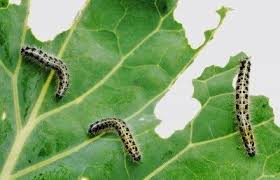The Righteous Brothers had a hit song with a line that highlighted an important stomach-related word. “I’ve hungered” it went, then, repeating the word, “hungered for your touch”. It’s a lovely song, but it has nothing do do with eating. Still, that doesn’t matter. Listeners know that “hunger” and “hungered,” when the context is human beings, can mean more than filling an empty stomach.
Take Aristotle. One of his most cited
lines reads like this: “all men, by nature, desire to know.”
What he says is that we have an "orexis" for knowledge. The term translated “desire” can mean reach for, yearn for, or hunger for. But why can “hunger” a biologically-derived term, apply in contexts of affection and intelligence? Humans are biological creatures and they are more than that. The metaphorical use of “hunger” offers one level of support for such continuity with difference. Aristotle’s entire philosophy was friendly to biology. This did not mean he reduced "human" to the merely biological. There are continuities and differences. He insisted that all ideals had a natural basis and all natural tendencies had an ideal culmination (to paraphrase George Santayana).
Philosophers are often accused of playing with words. Sometimes this is true. Sometimes, recognizing distinctions is meaningful. In his book.
Hunger, Raymond Tallis suggests that “hunger” and “appetite” should be distinguished. The former, along with the non food-centered term, “desire,” is more indicative of all-embracing humanity than is “appetite.” The difference? Narrative time. “A desire is an appetite that has a story--albeit unfolding, evolving, fragmented, at its heart.” It is a hunger that narrates itself and tries to make sense of itself.”
Appetites are raw, instinctual, sated in a stimulus-response way. Desires/hungers are multi-layered. They are often occasioned, not by an object but by a relationship. That’s certainly the case in both the Unchained Melody of the Righteous Brothers and in Aristotle’s claim about human hunger for knowledge. What is yearned for is ongoing (time-factored) actualizing: making love real in one case and satisfying curiosity in the other.
The culminations of such hungers occur only within spans of time. Unfolding within spans of time means not only that they are ongoing, but that they require effort, and, instead of unimprovable perfection, often result in culminations with loose ends. They are thus precarious, subject to contingency, require that we make ourselves vulnerable, and can be frustrating.
For those reasons, there is a general tendency to an-orexia, the suppression of hunger. This is not just the pathology associated with physiological appetite.
There is also intellectual an-orexia: the longing for absolutely secure, contingency-free, doubt-free existence. One impediment to such security: thinking. After all, thinking is bothersome, annoying, discomforting. If only the yearning, the hunger for knowing could be suppressed, if only intellectual anorexia could become the rule, then a sense of comfort, and security could be established. The paths to intellectual anorexia are well-paved and multiple. Two came to special prominence during the Modern (roughly 1600-1900) era: logical deduction and calculative rationality. Using formal logic to deduce conclusions that are certain has little to do with thinking. The latter always engages complicated situations and arrives at resolutions that are only secure within varying degrees of probability. Instrumental rationality, which starts with a pre-ordained end and then calculates the most efficient means of getting there, offers a poor substitute for thinking which puts ends themselves into play. Other strategies have been around forever: absolutism and skepticism. But wait, readers may be thinking, aren’t these opposed to one another. Well, yes, they are. One says, “the answers pre-exist, all you have to do is accept them.” The other says “there are no answers.”
Despite their differences, and like logic and instrumental rationality, both offer a particular and attractive invitation: stop thinking. It might be “stop thinking because the answers are already at hand.” It could be “stop thinking because there are no answers anyway.” In each case, the result is the same: peace of mind occasioned by sidestepping the annoying practice of thinking.
For the physiological anorexic, the body’s constant demands for edibles is felt as an oppressive demand. For the philosophical anorexic it is the demands of the mind that are annoying. Thinking involves “trials,” literally the processes of sifting out, of trying one path and then another. Such processes are are also “trying” in the sense of being annoying, bothersome. Like hunger, thinking never leads to stasis. The practice is unending. How to eliminate such discomfort? Go intellectually an-orexic. Hide behind pure logic. Transform thinking into calculating. Pretend the answers are already obvious. Insist that finding answers is not possible. In other words, suppress a basic human orexis, stop thinking.





















